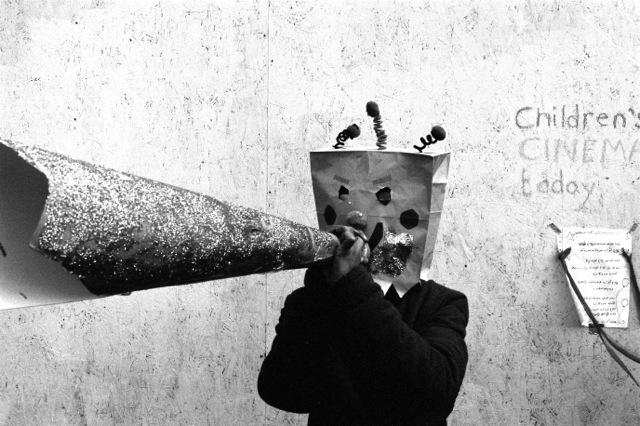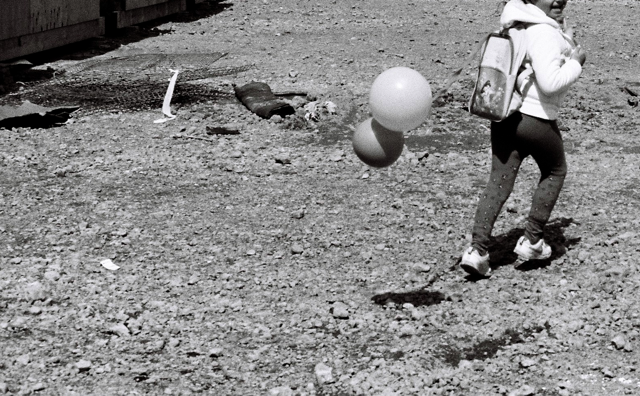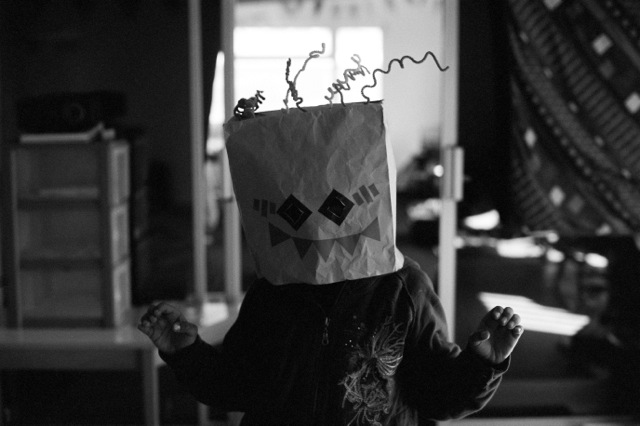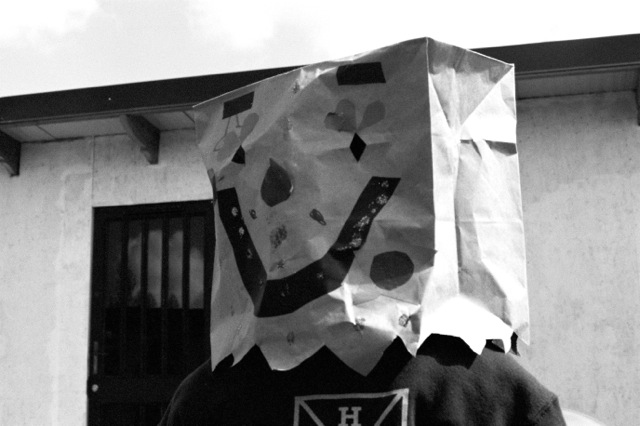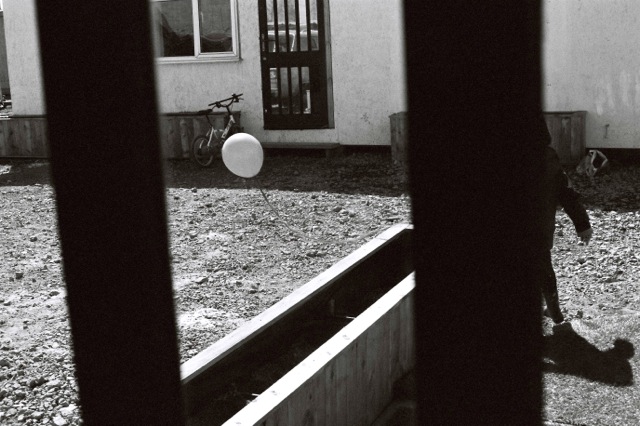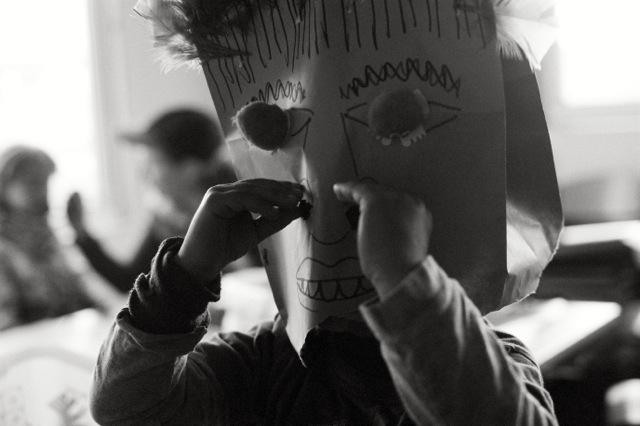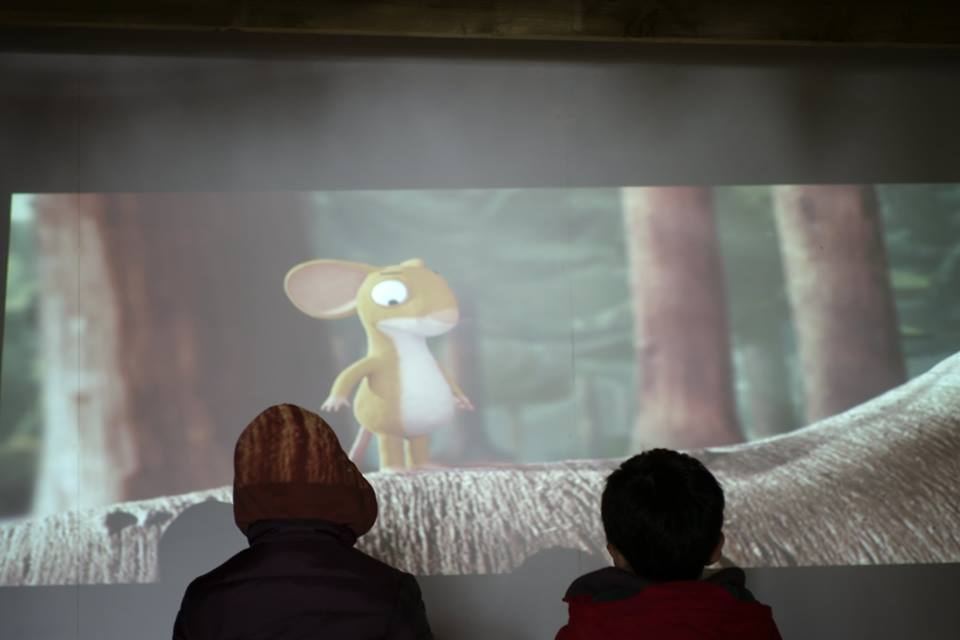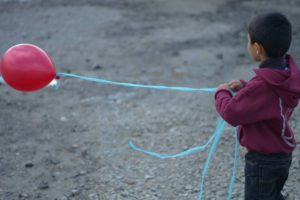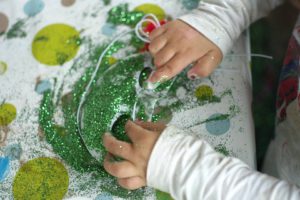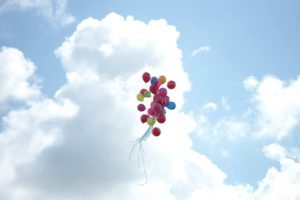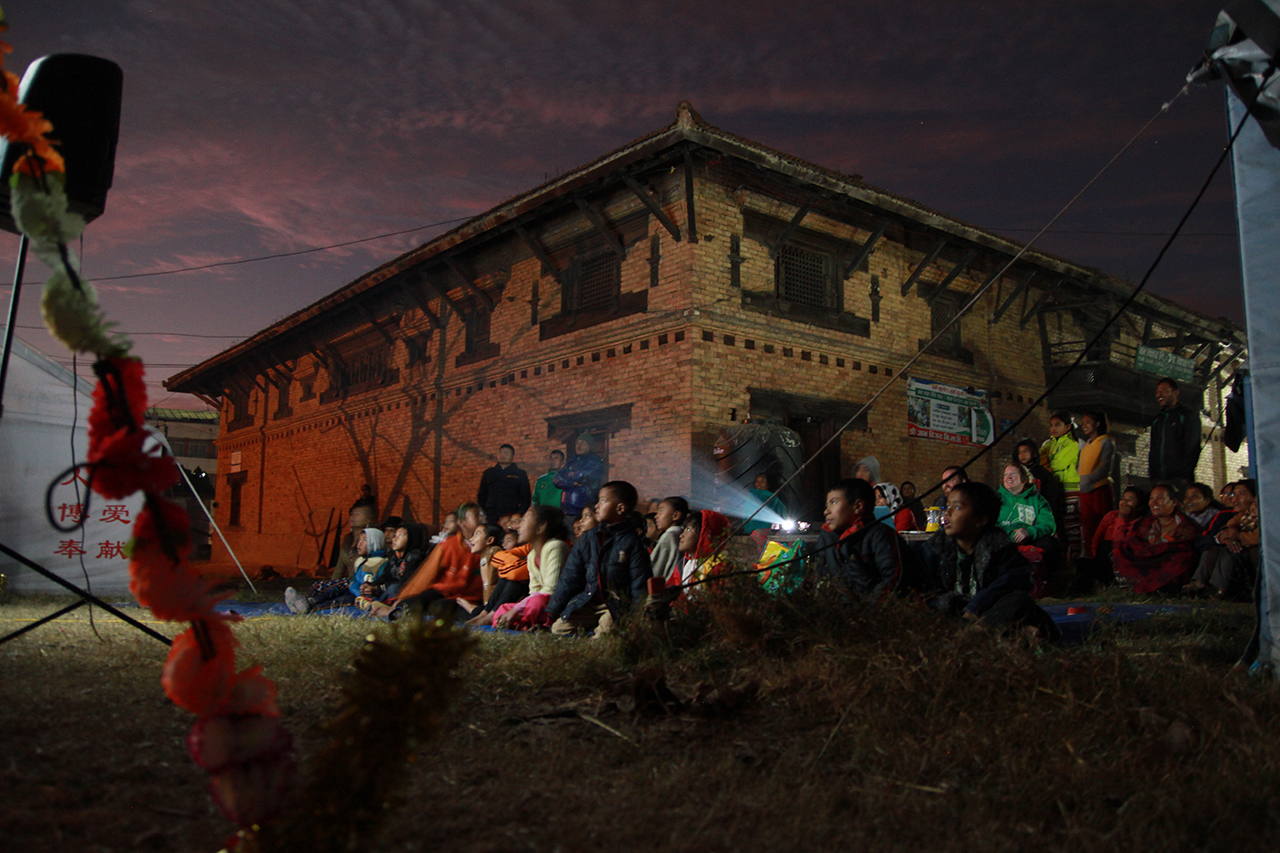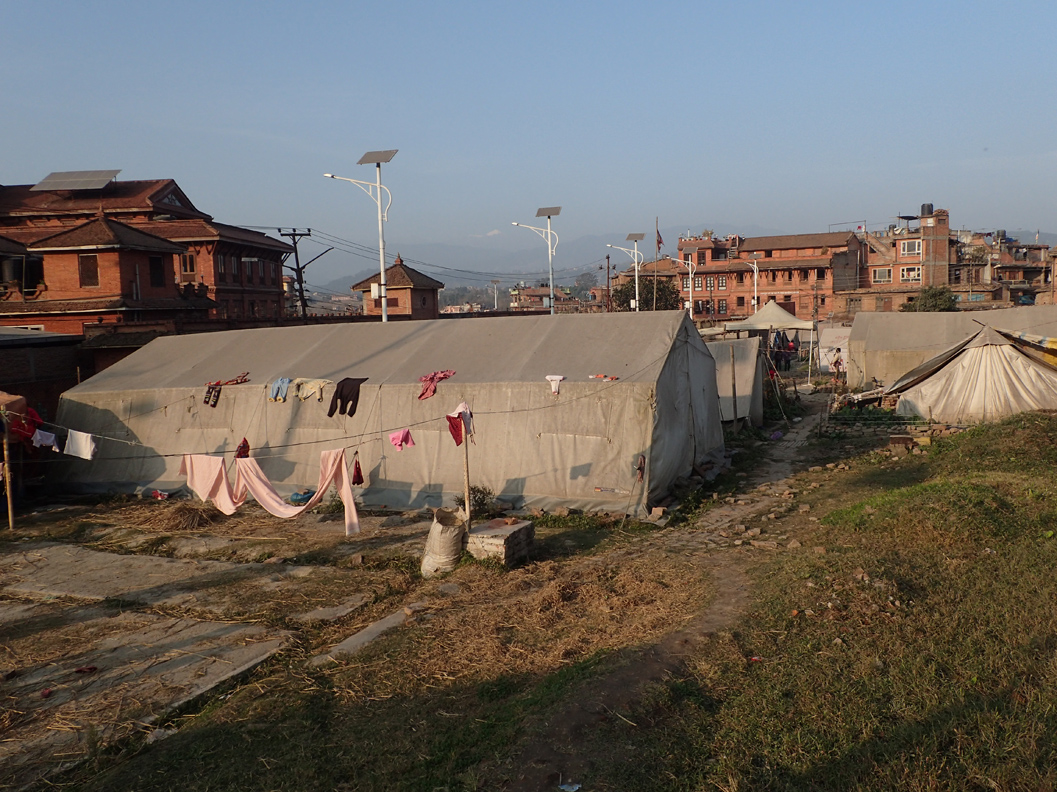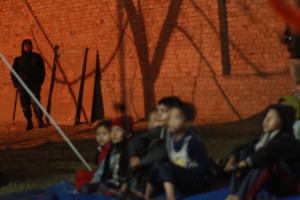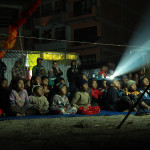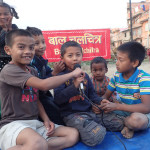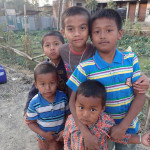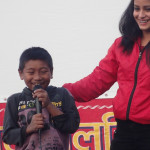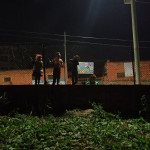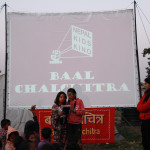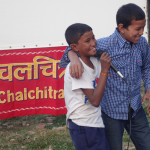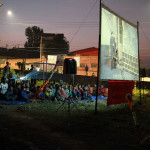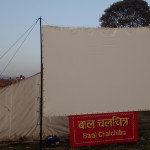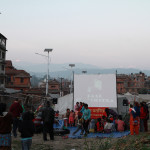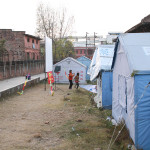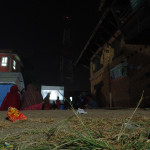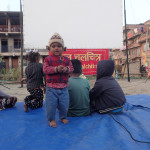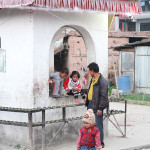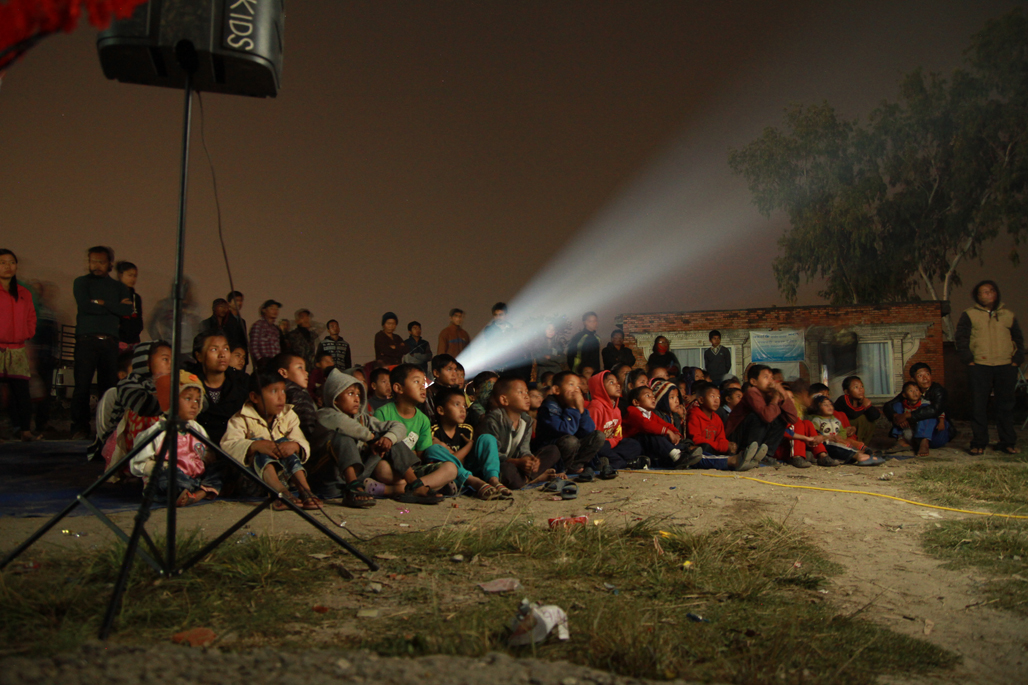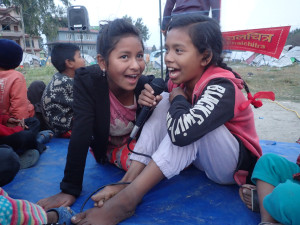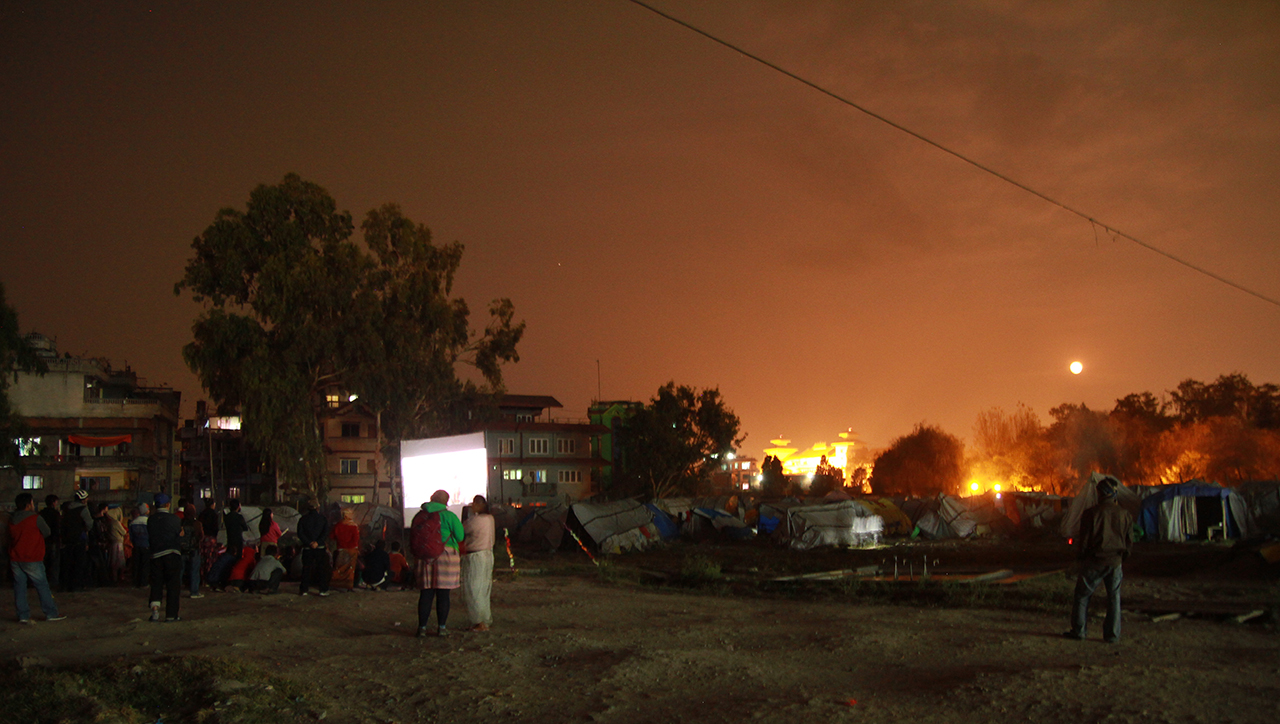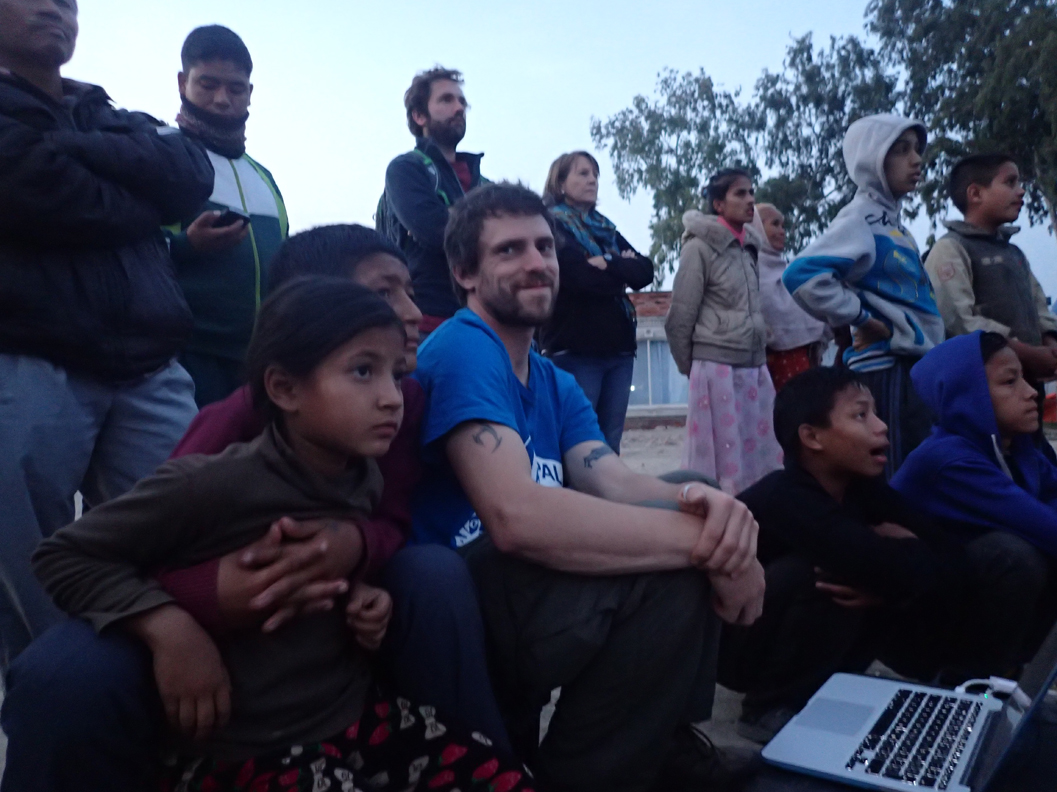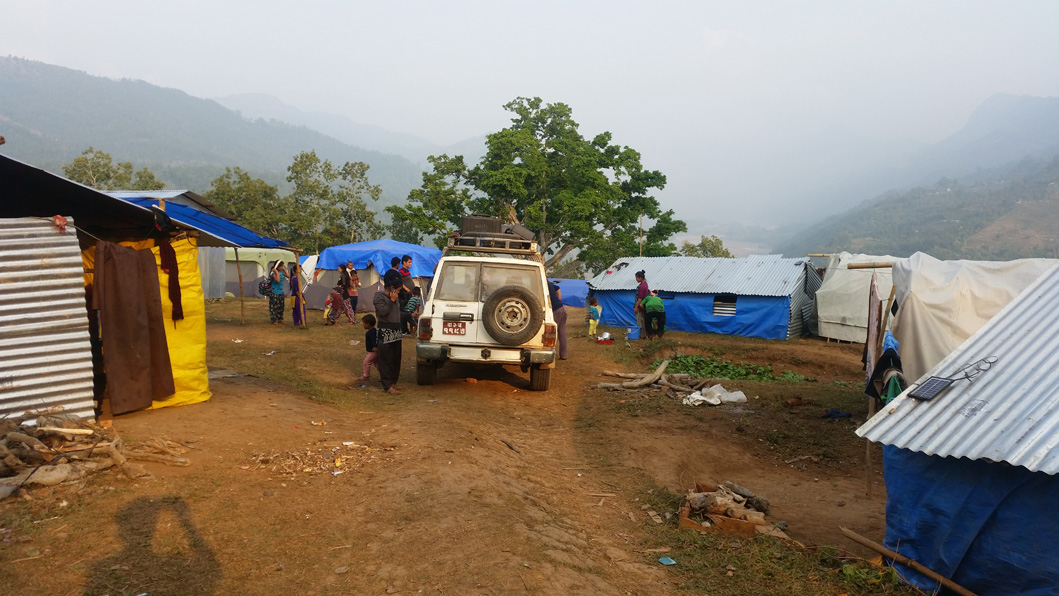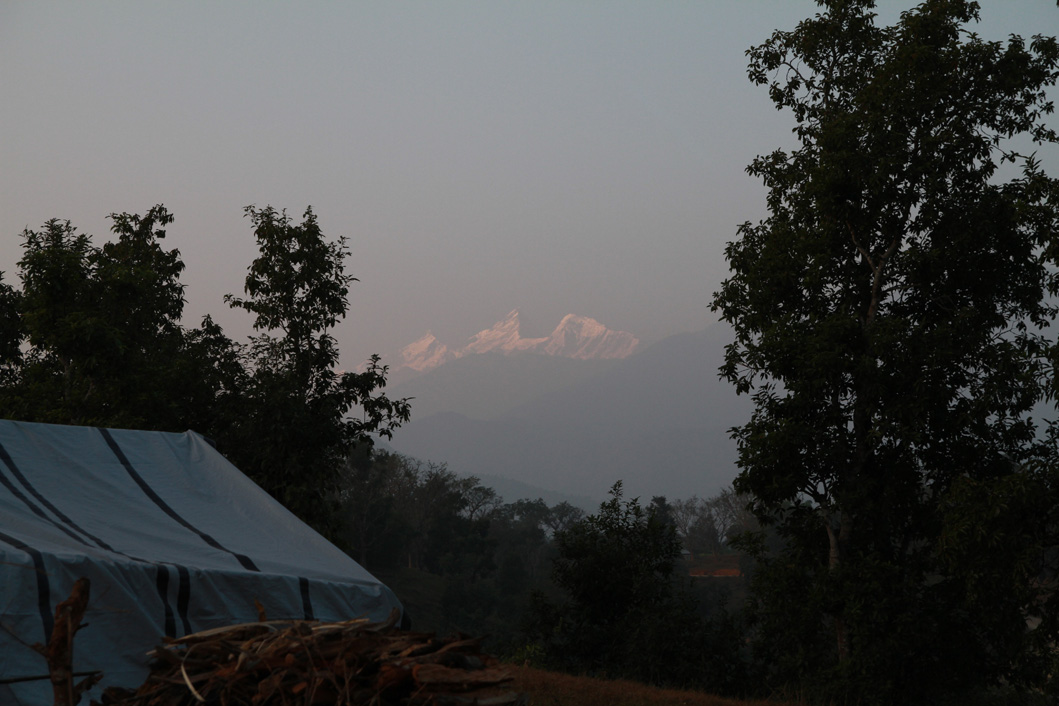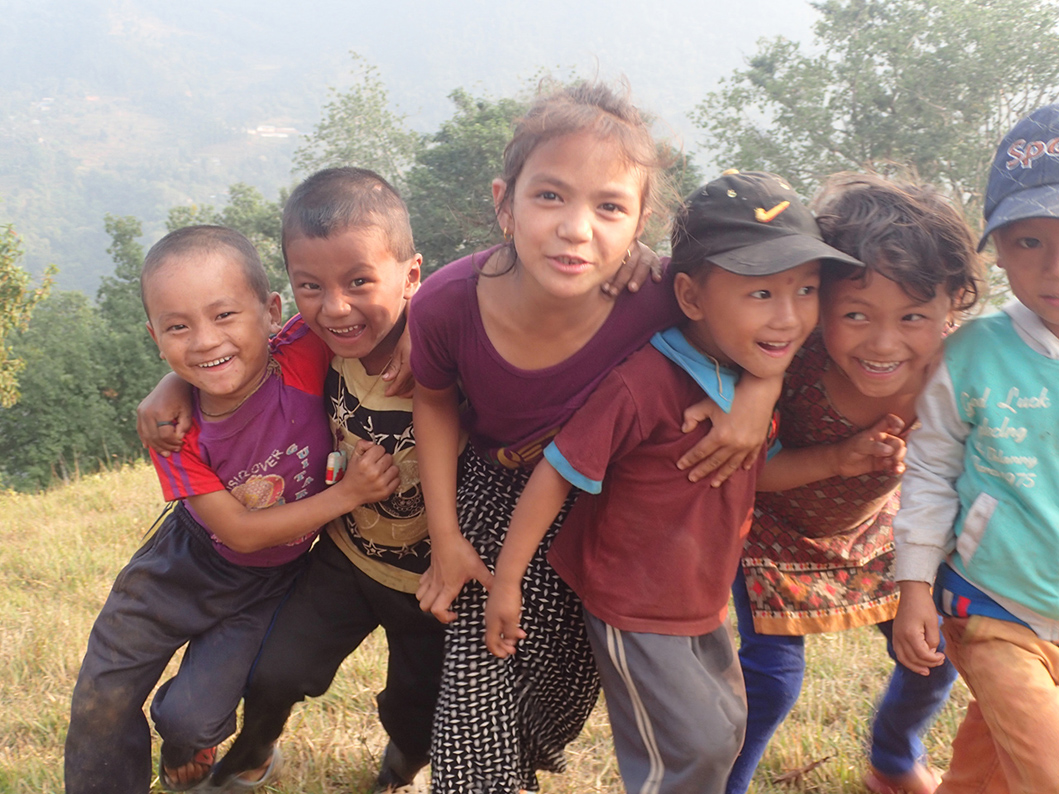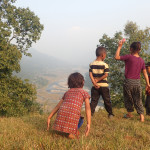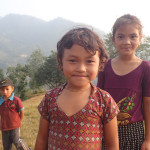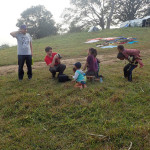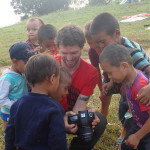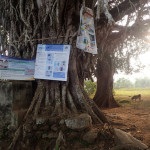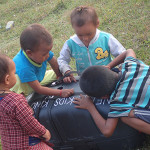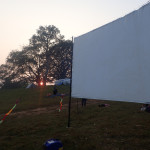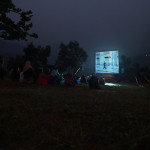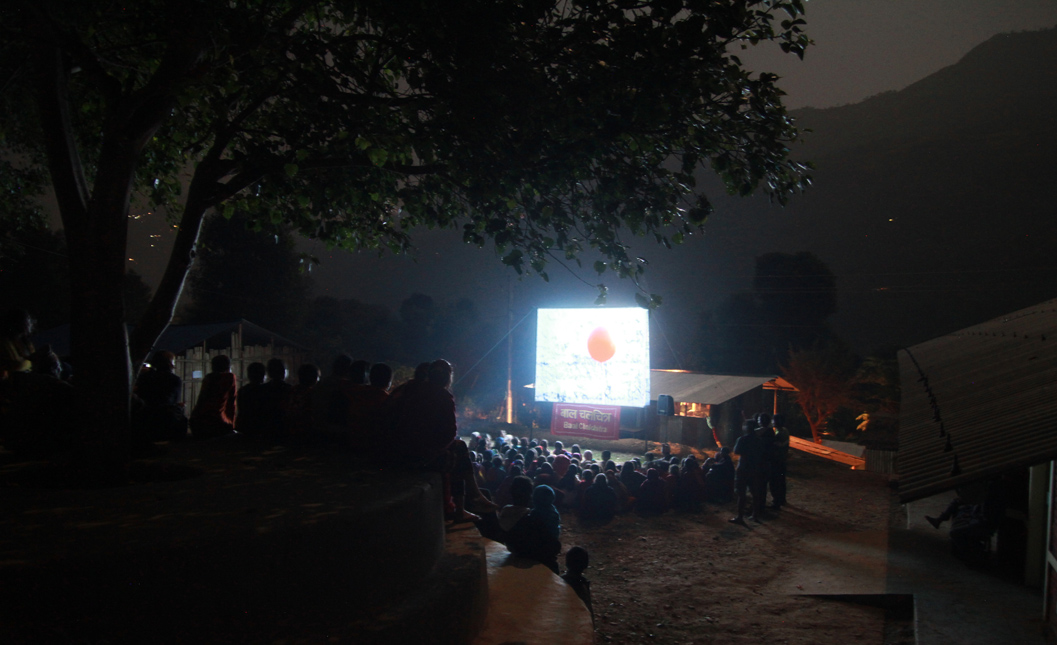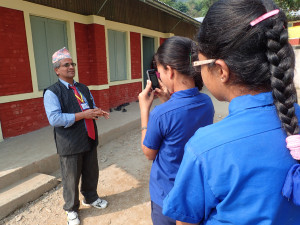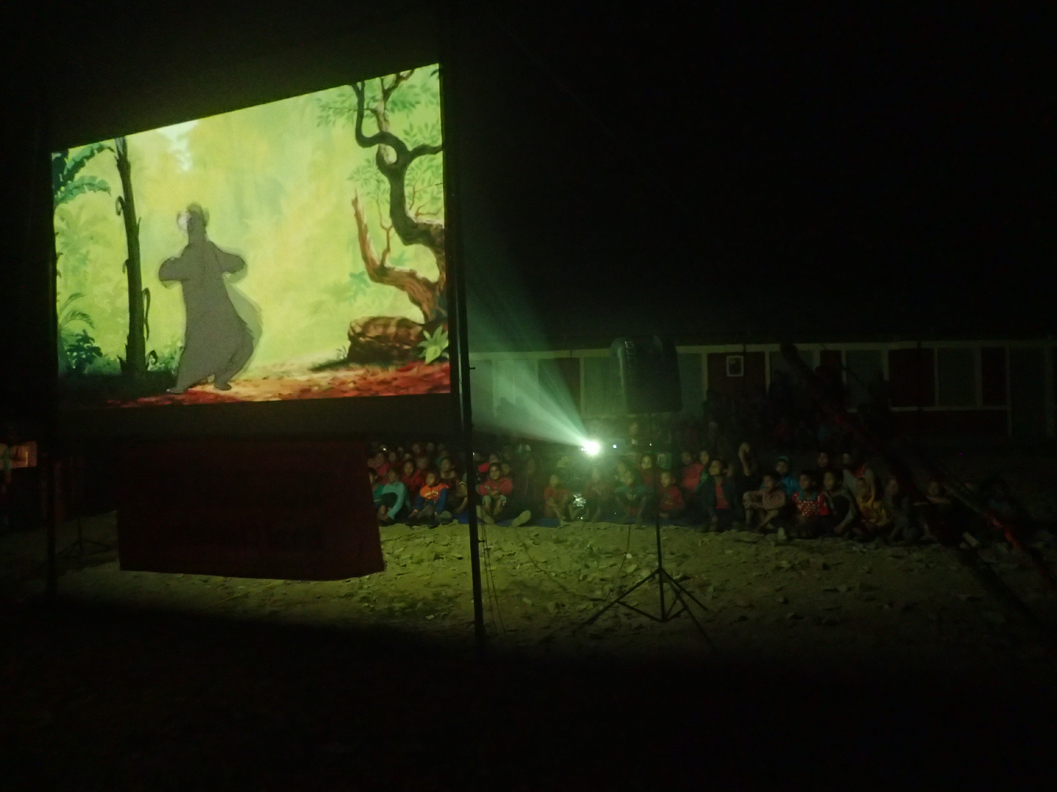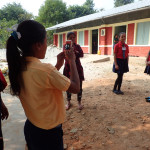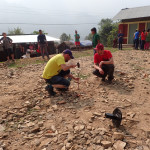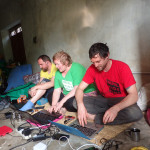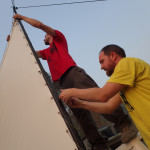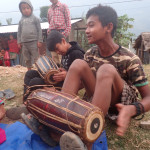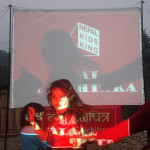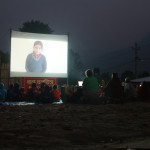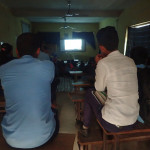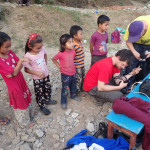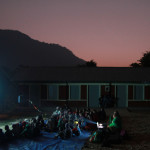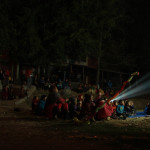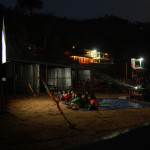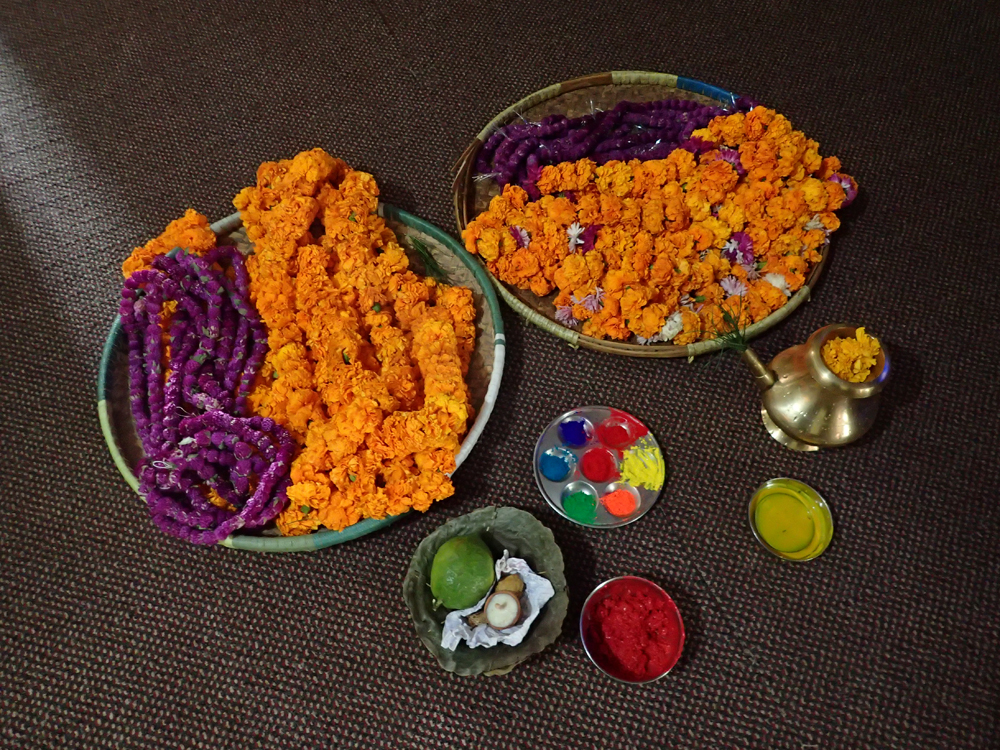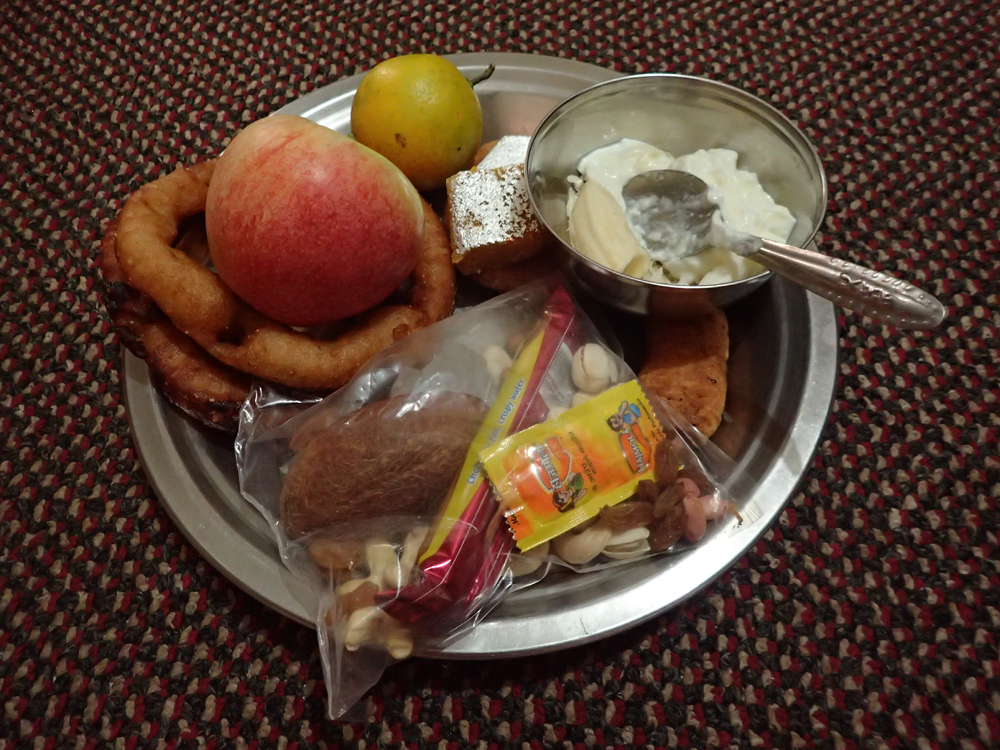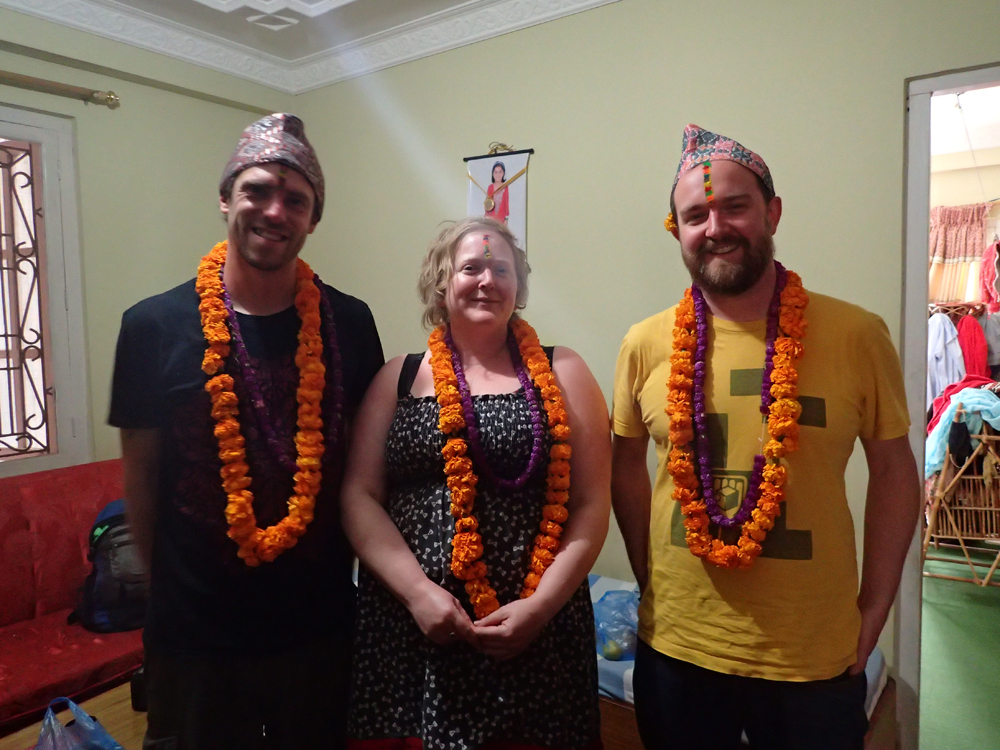We sent another group (Holly, Gary, Amelia & Jesse) over to Dunkirk for a week of cinema screenings, workshops and fun. Here’s a diary by Holly and images by Amelia and Gary.
Tuesday
We stayed at Esther’s friend’s house in Folkestone Monday night and wake up bright and breezy Tuesday morning. We head to the Euro Tunnel at 7.30 and before I know it (I slept!) we arrive in Calais and head to Dunkirk only 30 minutes away. The camp at Grande-Synthe appears to the right of us, between the motorway and a train track, the camp spreads out in a large triangular shape of gravel ground and wooden shed-like huts.
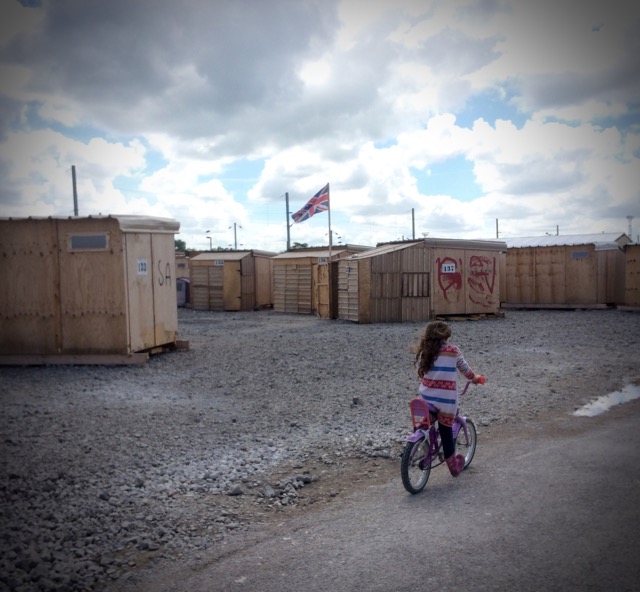
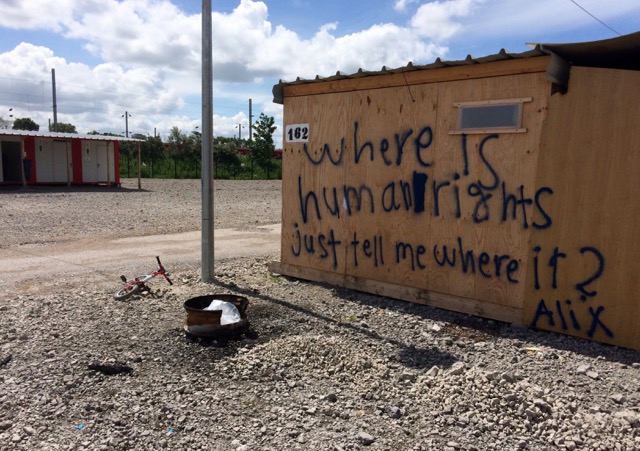
Once through the checkpoint and into the camp, we arrive at the two little classroom buildings. We’re working in the one for younger children, and walk into a classroom that could have been anywhere in the UK. Small tables and chairs, weather charts, small pegs for small coats, pasta paintings on the walls, bunting on the ceiling and a big soft play padded area with toys and teddies galore. It’s only when you look out the windows that you are quickly reminded where you are.
We meet Freya, the coordinator of the children’s centre, Holly and Musashi, two long-term volunteers and many lovely short-term volunteers. The centre operates entirely on donations from the public and the generosity and energy of the volunteers. There are a few children in the classroom who are playing with the volunteers, but we’re told most children arrive late morning.
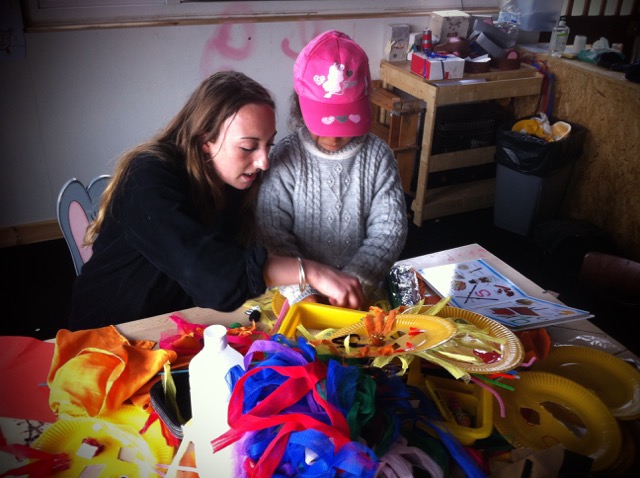
 We spend the first morning just playing with the kids, doing arts and crafts, chatting to the volunteers and getting a feel for the place. The parachute games start off chaotically outside, but end up being great fun and lots of kids joining in (we recruit a bigger boy to help gain some discipline!)
We spend the first morning just playing with the kids, doing arts and crafts, chatting to the volunteers and getting a feel for the place. The parachute games start off chaotically outside, but end up being great fun and lots of kids joining in (we recruit a bigger boy to help gain some discipline!)
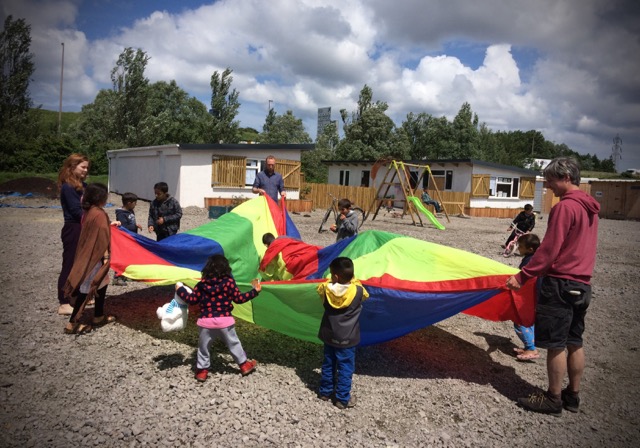
Lunch is taken 1.30pm to 3pm and we realise that after lunch is the perfect time to screen films. We choose the Kurdish film ‘Bekas’ and have a poster created and written in Kurdish (about 95% of the camp in Dunkirk are Kurdish.) After promoting the film in the morning, we happily return from lunch to a big group of children outside the school room all eagerly awaiting the Cinema. With the screening in the soft play room, the audience get cosy in blankets, on cushions and small plastic chairs and delightedly watch the film. Immersed in the film they watch wide-eyed and bellowing with laughter – a total success!
Wednesday
The rain arrives with us this morning. Not too heavy, but perhaps enough to put off some children coming to school. Ruth, a retired music teacher has travelled from Britain to deliver a music workshops with the kids, except there is only one child – the most gorgeous 2 year old who demands her mum takes her to school first thing. So we decide to walk around camp and gather the children ourselves, playing the drums, tambourines and shakers, chatting to families as they come out of their huts to hear what the noise was about. We have some of our first conversations with the women in the camp, who tend to stay in their huts. The camp is certainly very male dominated, with groups of men chatting together and the volunteers and children being the most visible females. A group of children proudly show us their pets – 5 fish swimming in a pan next to a collection of plants.
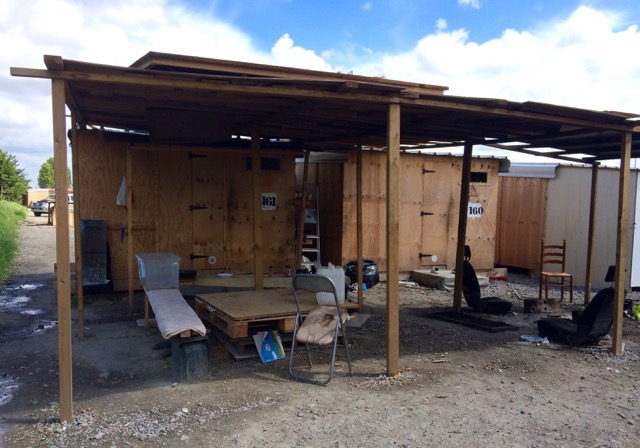
After returning to the school with no children we are delighted to find about 10 once we get inside. Ruth plays the guitar and leads songs, and we play the hokey cokey and Simon says. A man from the camp who was a music teacher in Kurdistan sings to the children in Kurdish. We create the poster for our afternoon screening of ‘Shaun the Sheep’ and head out for lunch. We eat a delicious meal of curry salad and bread created by residents of the camp who are chefs, and sit down to eat with residents and other volunteers.
Returning to the classroom, we find a hoard of children outside chanting ‘cinema, cinema, cinema’. They enjoy the cartoons and short animations but they don’t hold their attention like ‘Bekas’ had. This afternoon is particularly tough as it’s so hot – the children are easily agitated and resort to being quite boisterous. We change the plan and screen ‘Mr Bean’, which holds their attention till the end of school. We get the parachute out and lure them from the classroom with outdoor games – it’s always a struggle to close at the end of each day as the kids are reluctant to leave, and removing them has turned into a game on their side!
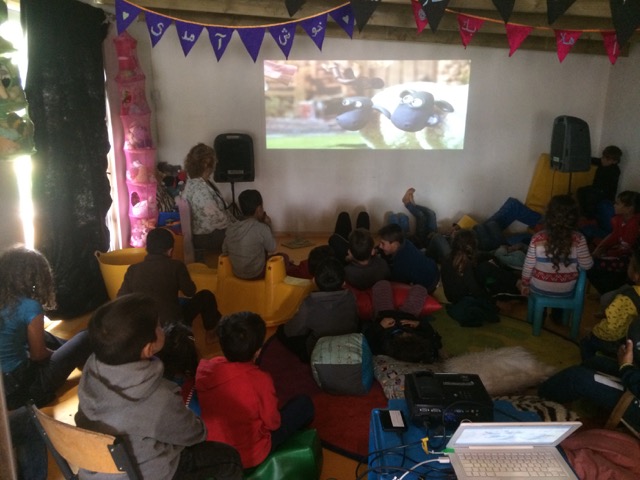
Thursday
Lots of children are in this morning. We get cracking with our arts and crafts activities. Amelia makes cat and mouse ears which the children love whilst I help them make handheld kites with strings of colourful material attached, flying in the wind. Gary and Jesse finish raking the stony ground to create a relatively smooth football pitch for the kids. A young man comes to see what we are doing and helps them with the raking and then joins in the games.
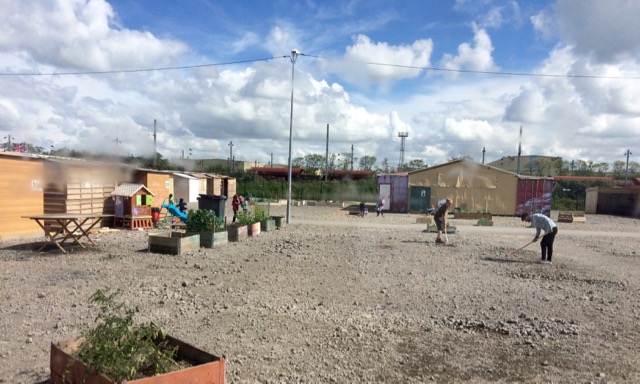
The kitchen relies mainly on donations of food and money in order to keep open. We go to the coffee tent but the coffee has run out quickly so we go for tea but there are no cups or bowls- there definitely isn’t a surplus of supplies. I take my daily trip to a man with a table selling snacks and cigarettes and purchase that afternoon’s cinema snacks- a pack of chocolate biscuits. We screen Kurdish cartoons which go down a treat, but the feature length animation we play after is very slow. Everyone begins to get bored and requests good old ‘Mr Bean’.
Friday
Our final day in the camp, and also Amelia’s 21st birthday. We buy an apricot tart (birthday cake) and take it to school to share it with the children. The children sit around the table with a cup of milk and a slice of cake and Holly, a volunteer, leads a huge happy birthday sing-a-long with ‘happy birthday’ being shouted in both English and Kurdish. We then lift her up for 21 bumps which the children find hilarious!
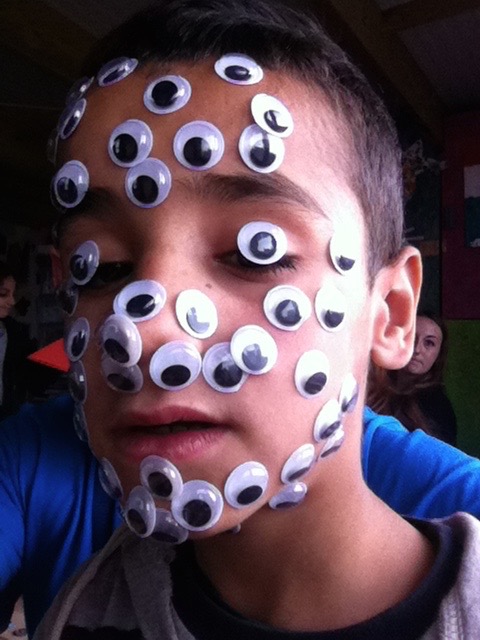
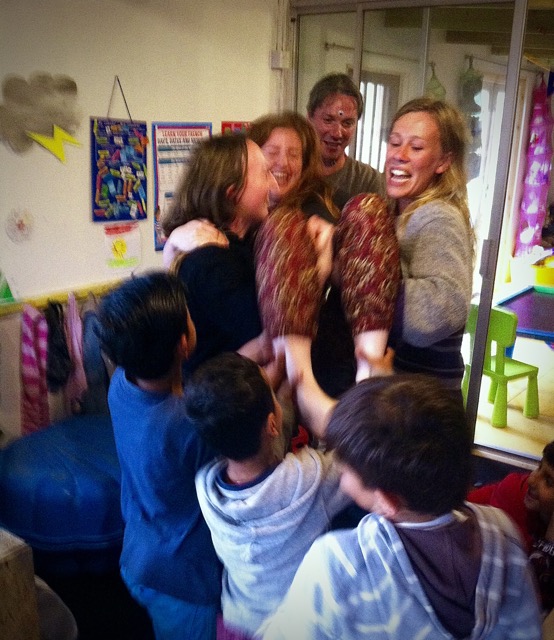
Today the weather’s a bit miserable. Without camp residents standing in the camp drinking coffee and chatting, without kids cycling up and down and families cooking outside their huts, it has a much more subdued feel. All of the residents are in their huts, listening to the rain beating down on their roofs.
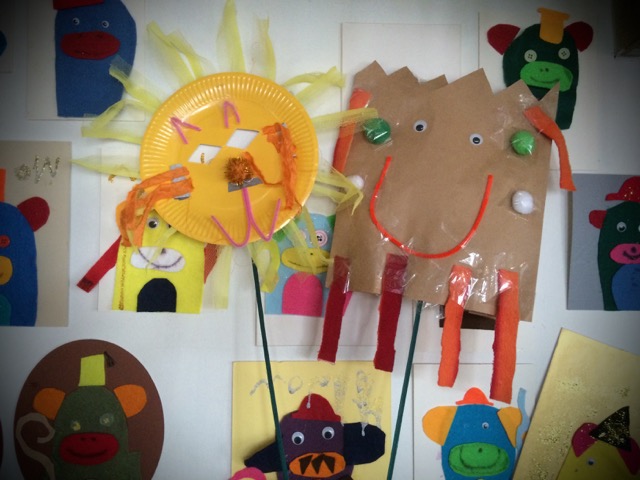
We make masks with colourful paper plates and big paper bags. They love the glittery pom poms and googly eyes, which end up all over their faces instead of the masks. We finish off our lovely final morning with games of snakes and ladders and air hockey. After leaving a projector, speakers and a hard drive filled with children’s films with the grateful volunteers, we bid our reluctant farewells and head back to the channel tunnel and join the Euro football fans queuing for the train.
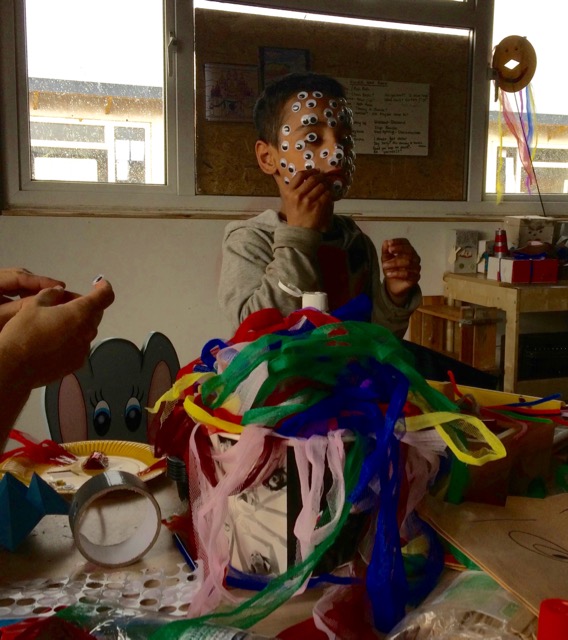
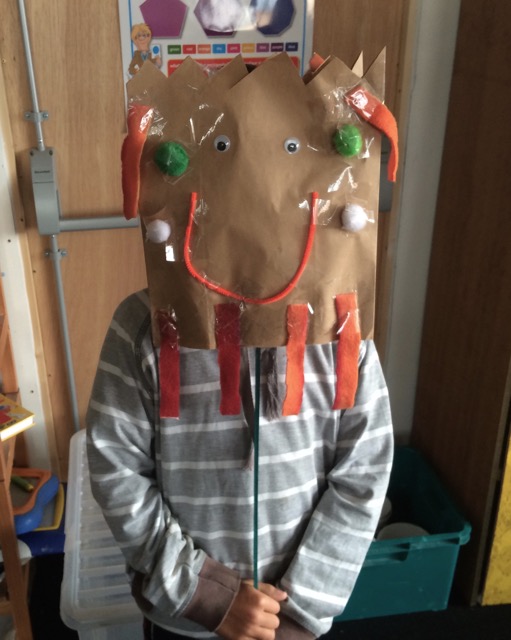

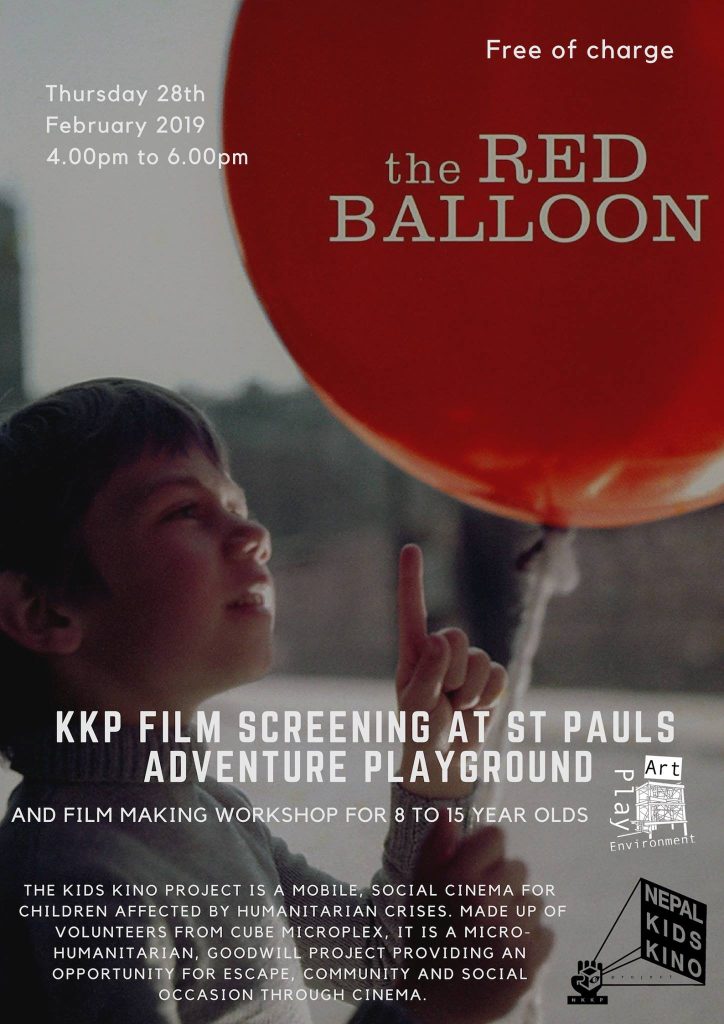




 We spend the first morning just playing with the kids, doing arts and crafts, chatting to the volunteers and getting a feel for the place. The parachute games start off chaotically outside, but end up being great fun and lots of kids joining in (we recruit a bigger boy to help gain some discipline!)
We spend the first morning just playing with the kids, doing arts and crafts, chatting to the volunteers and getting a feel for the place. The parachute games start off chaotically outside, but end up being great fun and lots of kids joining in (we recruit a bigger boy to help gain some discipline!)








